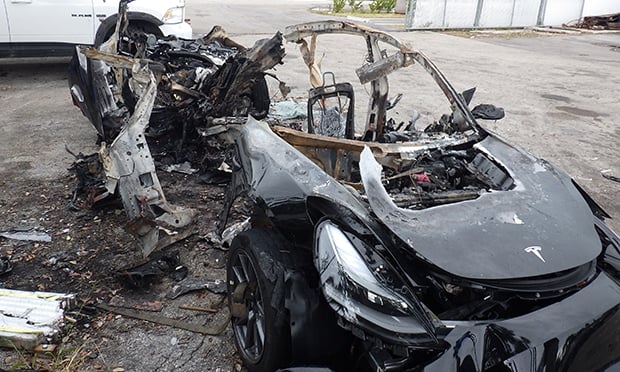 "The more electrified a vehicle becomes, usually the costs become higher and the systems become more complicate and interconnected," Ryan Mandell of Mitchell says. "As you remove that internal combustion engine from a vehicle, you now have things that are being accomplished solely by semiconductors and digital communications." (Credit: National Transportation Safety Board)
"The more electrified a vehicle becomes, usually the costs become higher and the systems become more complicate and interconnected," Ryan Mandell of Mitchell says. "As you remove that internal combustion engine from a vehicle, you now have things that are being accomplished solely by semiconductors and digital communications." (Credit: National Transportation Safety Board)
As electric vehicles (EVs) increasingly make up a larger share of vehicles on the road, and in turn a larger share of cars involved in accidents, the impact on repair shops and auto insurers will be indelible.
Recommended For You
Want to continue reading?
Become a Free PropertyCasualty360 Digital Reader
Your access to unlimited PropertyCasualty360 content isn’t changing.
Once you are an ALM digital member, you’ll receive:
- Breaking insurance news and analysis, on-site and via our newsletters and custom alerts
- Weekly Insurance Speak podcast featuring exclusive interviews with industry leaders
- Educational webcasts, white papers, and ebooks from industry thought leaders
- Critical converage of the employee benefits and financial advisory markets on our other ALM sites, BenefitsPRO and ThinkAdvisor
Already have an account? Sign In Now
© Touchpoint Markets, All Rights Reserved. Request academic re-use from www.copyright.com. All other uses, submit a request to [email protected]. For more inforrmation visit Asset & Logo Licensing.







